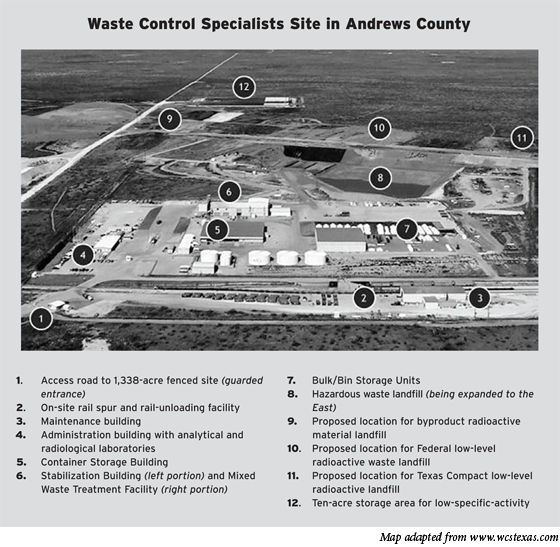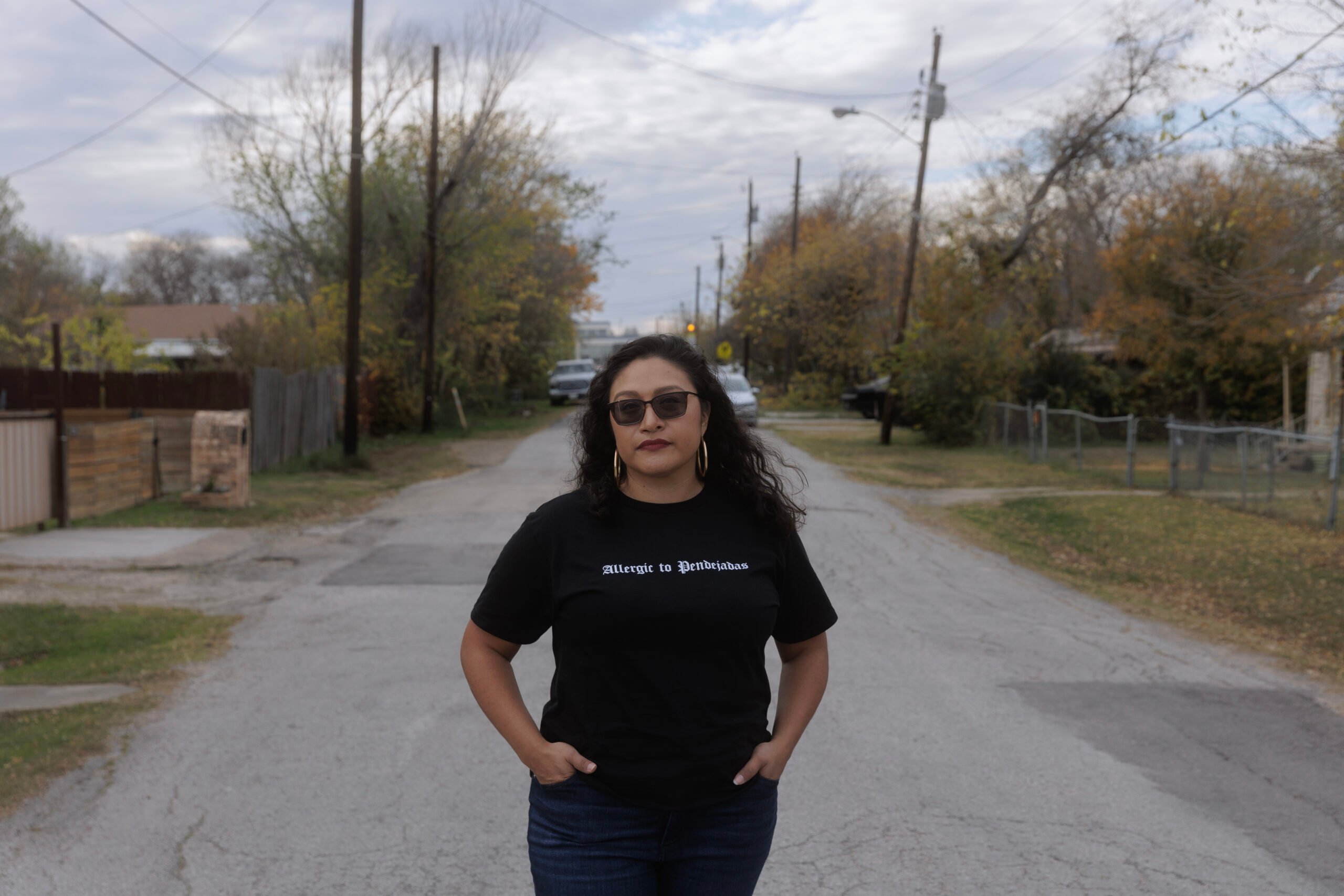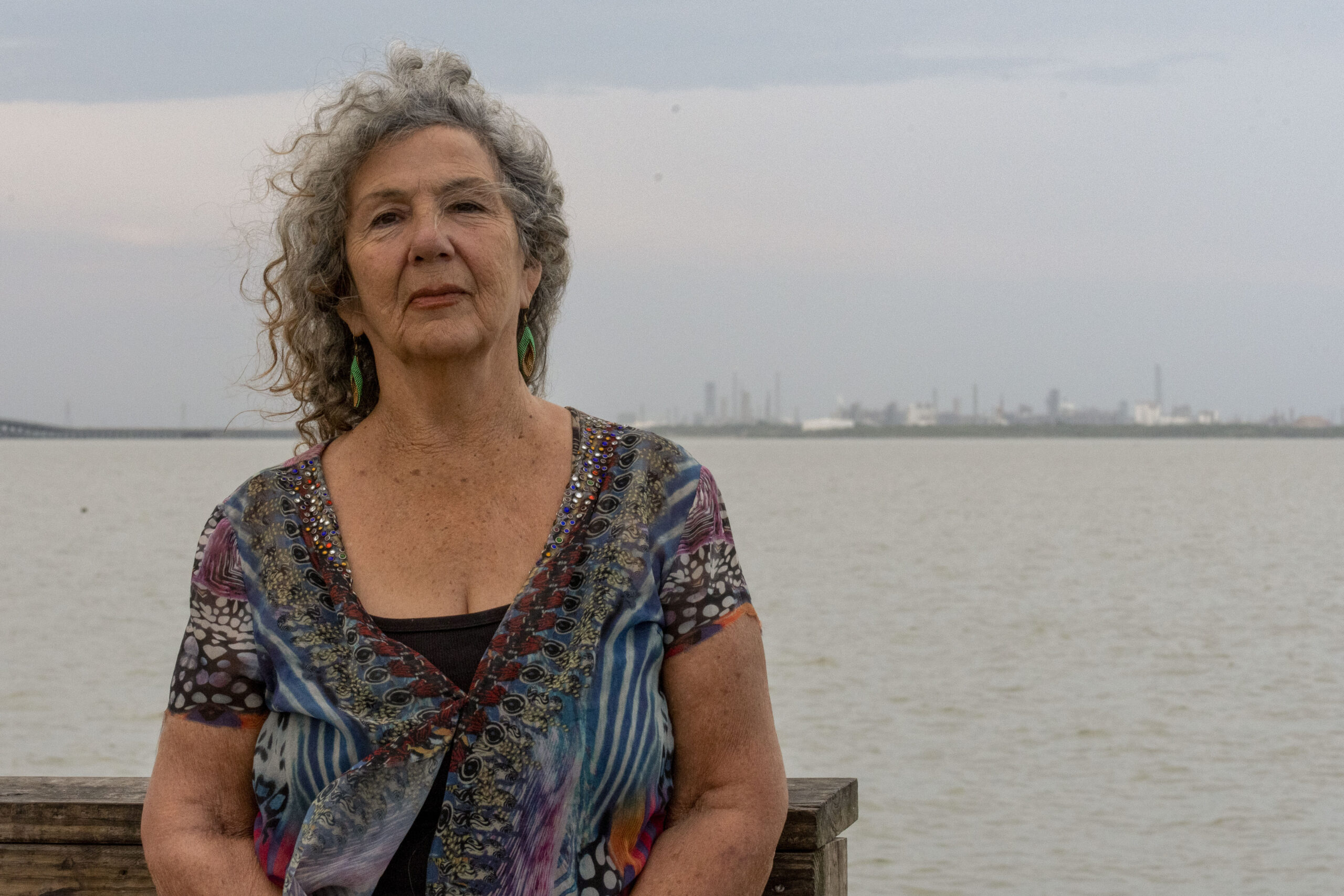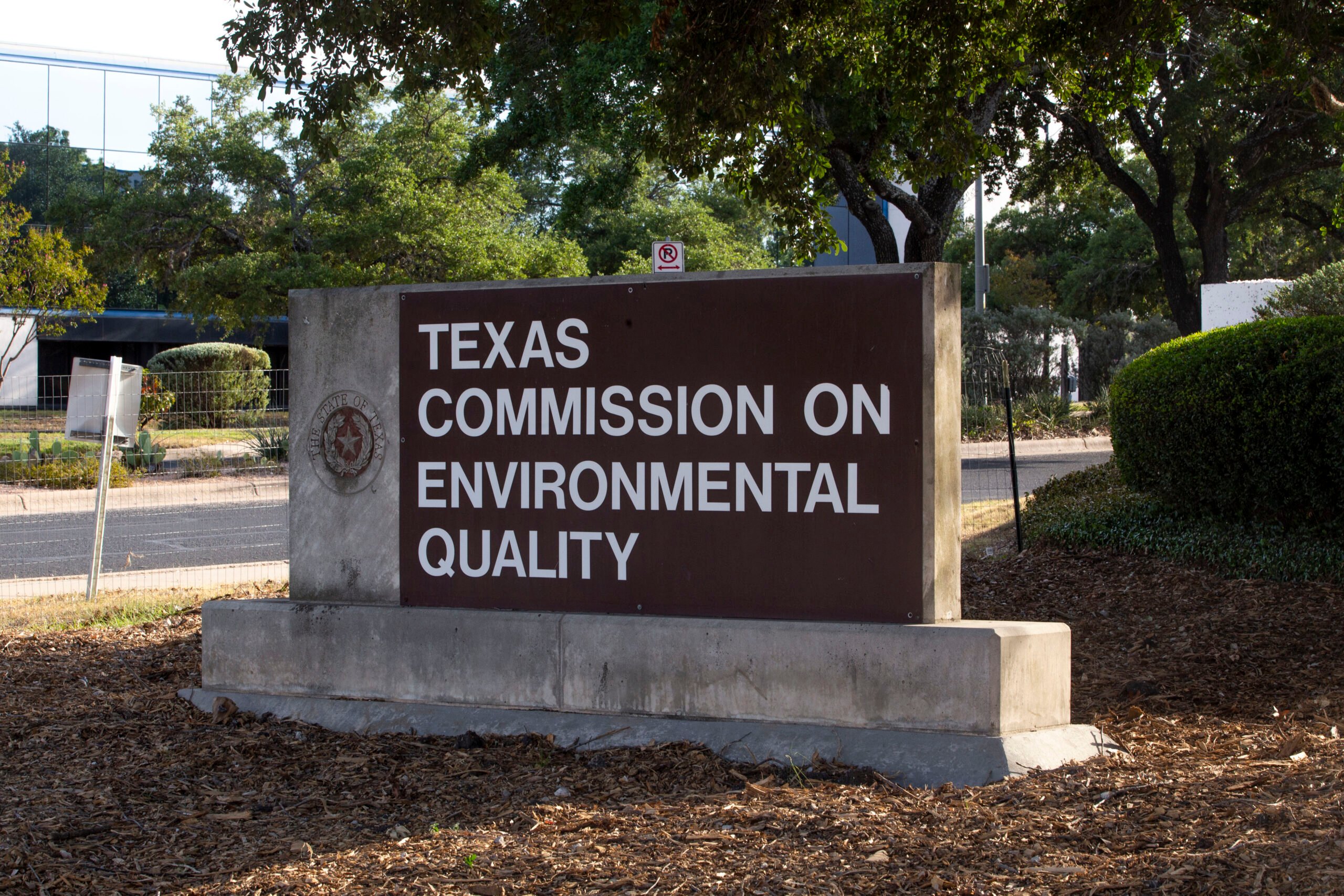
Burying the Opposition
A plan for radioactive waste burial is so bad even some TCEQ staffers think it should be killed. Fat chance.

For more than a decade, Waste Control Specialists has had big plans for a desolate corner of the West Texas oil patch near Andrews along the Texas-New Mexico line. There, this aggressive company, controlled by Dallas billionaire and major Republican donor Harold Simmons, has been preparing a permanent home for some of America’s most unwanted waste, a sort of poisonous melting pot. Along the way, Simmons has donated millions of his fortune—$1.3 million to Texas politicians in 2005 and 2006 alone—to help political leaders see the value of his plans.
Waste Control, a subsidiary of Simmons’ holding company, Valhi Inc., has already wrangled permits from state regulators allowing it to dispose of hazardous and toxic wastes, and to operate temporary storage and processing facilities for radioactive waste. In 2006, Waste Control scored a major contract from the U.S. Department of Energy to temporarily store thousands of tons of highly-radioactive tailings from a Cold War-era uranium processing plant in Fernald, Ohio. Utah and Nevada had rejected the waste. PCBs dredged from the bottom of the Hudson River, an EPA Superfund site, will start arriving by rail from New York in 2009.
The right to permanently dispose of radioactive waste has long been the company’s Holy Grail, the key to unlocking billions in revenues. Waste Control, a small corner of Simmons’ business holdings, consistently loses money ($9.7 million in the first three quarters of 2007, according to Securities and Exchange Commission filings). Burying vast quantities of state and federal nuclear spoils in the red clay of West Texas could make the outfit a national player. As other radioactive waste dumps around the nation close or curtail their operations, Waste Control is anxious to close the deal in Texas.
The Texas Commission on Environmental Quality appears on the cusp of granting the company two permits it covets, despite the objections of some of the agency’s own scientists and engineers. They worry that the company’s political clout will trump their fears of a future environmental disaster, and say the company’s permit application is shoddy and incomplete. In documents obtained by the Observer, several TCEQ staffers assert that Waste Control’s current application for one of two planned waste dumps is out of step with the law.

TCEQ did not respond to repeated Observer requests for responses to the startling charges made by some of its staff, or to explain why some of those concerns have been omitted from the draft license documents released for public comment.
A spokesman for Waste Control says the company’s license application was “thorough, complete, technically correct,” and addressed safety concerns.
In 2003, after years of failed attempts, Waste Control managed to ram a bill through the Texas Legislature privatizing radioactive waste disposal in the state. It allowed a private entity-and Waste Control was the only one in line-to apply for a permit to construct a landfill for federal and state low-level waste. In 2004, Waste Control sought permits to build permanent dumps for two different categories of radioactive waste, technically known as “low-level” – generally remnants from nuclear reactors – and “byproduct material,” which includes uranium and thorium mill tailings and radioactive soil.
In October , the TCEQ issued a draft license and environmental analysis for the byproduct waste dump. The draft license terms are being challenged by the Sierra Club-which says it is not restrictive enough-and Waste Control, which says it is too restrictive. The draft permit would allow the company to dispose of up to 1.17 million cubic yards of waste with up to a total of 24,530 curies of radioactivity. (A curie is a measure of radioactivity energy.)
Along with environmental groups, some TCEQ insiders are publicly and privately expressing grave concerns about Waste Control’s plans. They argue that the company’s voluminous application has failed to prove that the landfill will be safe for people and the environment.
Specifically, they worry that the landfill, as proposed, could contaminate groundwater with radionuclides; that the same High Plains winds that gave birth to wind farms might spread soil-like, radioactive byproduct around the region; that workers could be exposed to harmful levels of radiation; and that rail deliveries of waste could be unsafe for towns along the route.
The company proposes burying the byproduct waste in a 16-acre pit, about 100 feet deep, that would remain open for 30 years and then be sealed. Five years after it is closed, the state or federal government would assume responsibility for the site for the next few millennia.
“WCS stands to make millions on this and stick the liability with the taxpayers,” says a former state regulator familiar with the application.
The regulator, who spoke on condition of anonymity for fear of retribution, says the framework for the byproduct dump license is outdated and inadequate, based on rules that were written for already-contaminated uranium mining operations in South Texas rather than a new commercial landfill for radioactive materials.
“WCS exploited a loophole in the regulations to apply for this landfill,” says the former regulator. “The regulations require WCS to only look 200 years into the future as to how far the groundwater contamination may have migrated, when in fact, the waste is going to be radioactive for much longer than that.”
Retired geologist Stephen Etter says he left TCEQ in 2002 rather than suffer through what he expected to be a less-than-rigorous review process for Waste Control. “I had a real concern that the information requirements for the Andrews County site would not be nearly as extensive as the Sierra Blanca site,” Etter says, referring to the proposed state-run radioactive waste dump in West Texas that was killed in 1998 after a massive public outcry.
Critics charge that the application Waste Control submitted is riddled with incongruities, errors, and subtle evidence of reverse engineering. “The [byproduct] application was voluminous, but it was very poorly organized and written, making it very difficult to decipher or to figure out what [WCS] was planning to do,” says the former regulator. “It was presented in a very amateur way, with big chunks of data you needed to review it not there. It wasn’t well thought out. It was contradictory and inconsistent from one page to the next, from one section to the next.”
For example, computer modeling performed for the low-level waste permit application shows that radioactive waste in the byproduct dump will come into contact with groundwater. Waste Control did not include these findings in its byproduct application, according to a report by two TCEQ geologists working on the byproduct licensing review team.
The geologists wrote in a draft technical review of the application that they are “uncertain” why this information wasn’t included, since it “shows that the site features do not assure isolation of the waste material,” a key requirement for a potential radioactive waste site.
Waste Control also omitted specific data on the “nature and width” of fractures in the red-bed clay in which the landfill is located. The gaps could be pathways for contaminants to reach underground water sources, according to the geologists. Waste Control ran a computer simulation of water movement based on a maximum fracture size of 300 microns, about the width of three to six human hairs. On this assumption, the company calculated that it would take at least 70,000 years for radionuclides to reach saturated sands. However, the geologists assert that Waste Control never gave any justification for the use of a 300-micron fracture or any research on the actual size of fractures in the landfill area.
Waste Control has bragged to legislators, regulators, industry, and the media about the impermeability of the red-bed clay that underlies the site. A narrow portion of the Ogallala Aquifer, the primary source of water for much of the High Plains, is near the landfill. The landfill will be excavated into the Dockum Group, a minor aquifer used for irrigation and municipal water. Usable groundwater from the Dockum is found about 500 feet below the proposed byproduct dump. In a document obtained by the Observer, two TCEQ geologists concluded that these problems and others were so serious that the application did not meet the requirement that “the issuance of the license will not be inimical to the health and safety of the public.” This part of the geologists’ technical review was not included in the publicly released environmental analysis.
TCEQ would not make Susan Jablonski, who directs the agency’s radioactive materials division, available for an interview, instead insisting that questions be submitted in writing. By press time, the agency had not provided responses.
Another technical report, the process engineering review, raises the possibility that if the waste is not sealed in containers, high winds in the area could disperse the soil-like material outside of the pit, spreading radioactive contamination. Waste Control argued in its application that “windblown dispersion is expected to be minimal” because of the natural protection offered by the landfill and the use of water sprays for dust suppression. The company also says it will stop work when winds reach 25 mph. However, the TCEQ process engineer notes that Andrews County lies in the “highest dust emission zone in the southwestern United States” and that winds in the area sometimes exceed 50 mph.
Lou Gloystein, the author of the engineering review and a TCEQ engineer, also criticizes Waste Control for not checking the condition of a railroad line in southeastern New Mexico that apparently will be used to transport waste. He also raises the specter of “the potential for fire and explosion involving [hazardous] wastes,” which might affect the railcar receiving area for the byproduct dump, and “cross-contamination” between the adjacent byproduct and low-level landfills.
In the executive summary of the engineering report, Gloystein disparages the Waste Control application as “difficult to review,” “fragmented,” and “contain[ing] significant errata.” These comments were not included in the agency’s draft environmental analysis.
Gloystein’s report suggests a motive for Waste Control’s haste. “The proposed site in Andrews County appears to have been selected primarily because it is already owned by WCS, and currently represents a significant capital investment in land and existing facilities.”
As far back as 1987, before WCS had been formed, the state was questioning the suitability of locating a radioactive dump in Andrews County. The state-run Low-Level Radioactive Waste Disposal Authority sent a team out to Andrews to investigate. The team described the site as “marginal,” and Rick Jacobi, then general manager of the authority and now a Waste Control consultant, decided to scratch Andrews County as a possible site. In 1996, two years before the state rejected the contentious Sierra Blanca site, geologist Etter prepared another unfavorable report on Andrews.
Now retired and living in Austin, Etter says he prepared the memo on his own initiative because Waste Control had begun discussing its desire for a radioactive waste facility with state regulators. In the memo, which he took heat for, Etter used rough calculations to predict that “wastes disposed of at the WCS site could be exposed and removed within 5,000 years.”
“All I was saying was, ‘Hey, this site is an erosional regime’,” Etter recalled. “It’s actually losing material, and it will eventually be eroded away … I still think that’s probably the case.” Waste Control contends the site is actually “aggrading,” the opposite of erosion.
The draft license, issued in October, addresses many of the staff’s concerns by imposing 96 conditions on the company. Under the draft license, Waste Control would have to put the waste in containers, bring it in by truck instead of rail, and conduct further study of groundwater and engineering. However, in a voluminous filing during the public comment period, Waste Control proposes “alternative language,” which in many cases means striking or altering many of the license conditions. In all, the company proposes 59 modifications to the license conditions, including eliminating the container requirement, allowing rail transport, increasing the level of radioactivity allowed at the dump, and shifting toward monitoring conditions at the site versus verifying them before building the landfill.
“WCS is proposing changes to the individual license conditions to be consistent with the license application and the license application was thorough, complete, technically correct and fully addressed the safety and potential health effects of the proposed” byproduct facility, said Chuck McDonald, a WCS spokesperson. McDonald said that modeling done by the company shows that containerization is “not required for safe disposal.”
WCS also proposes major edits for the civil engineering, process engineering, environmental health physics, and operational health physics sections of the Environmental Analysis, gutting or weakening critical passages. In the case of the geology section, WCS simply asks to replace TCEQ’s skeptical language with an assessment written entirely by their own consultants.
“Everything that was said about the environmental analysis was done in a fashion that was consistent with the license application,” said McDonald.
“From our perspective, what happened is it was a shoddy application, TCEQ reviewed the application, saw it was shoddy, and added in the draft license a bunch of conditions to make up for the fact that the applicant failed to show it was a safe site,” says Cyrus Reed of the Sierra Club; he had not reviewed Waste Control’s latest filings at press time. The Sierra Club argues in public filings that the license should never have been issued and asks for a contested case hearing on behalf of 11 New Mexico residents and Sierra Club members if the draft license is not scrapped.
Critics say they believe TCEQ, under pressure from the company and its political allies, is speeding recklessly toward final approval, perhaps within 60 days. A draft license for the low-level waste facility, which some environmentalists say is the worse of the two, is expected soon as well. This favorable treatment of Waste Control was set in 1994, when the company got its first permit from the state in record time.
“There was always some, I don’t know, feeling that their hazardous material permit had been issued rather quickly,” says Edgar Bailey, a retired health physicist for the Department of State Health Services. “It just sort of left a bad taste in people’s mouth in how the company operated vis-a-vis the regulatory agency. They tended to seek political solutions.”
Critics fear politics will allow Waste Control to prevail on its new permit applications. “I think that the agency is generally in the business of promoting business and doesn’t regard the environment on an equal footing with business,” says the former regulator, “and I think particularly in this case, given the ownership of WCS, that there is pressure to approve this in spite of the harmful effect to the environment.”


